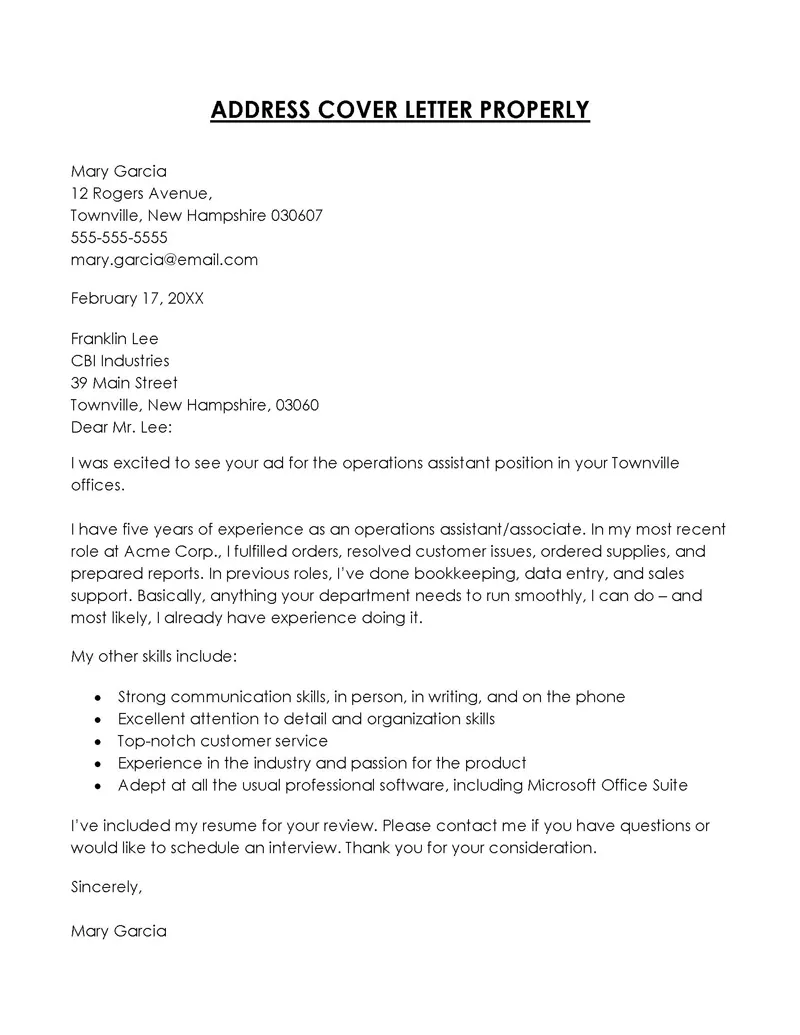Understanding the Importance of Cover Letter Addressing
Your cover letter is a crucial component of your job application, serving as your first introduction to a potential employer. While the content of your cover letter is undoubtedly important, the way you address it can significantly impact how it’s received. Proper addressing demonstrates professionalism, attention to detail, and respect for the recipient, all of which are essential qualities employers seek in candidates. A well-addressed cover letter sets a positive tone from the outset, increasing your chances of making a favorable impression and progressing to the next stage of the hiring process.
Why Addressing Matters
Addressing your cover letter correctly is about more than just politeness; it’s about showing respect and demonstrating that you’ve taken the time to personalize your application. This seemingly small detail can have a big impact on how your application is perceived by the hiring manager or recruiter. It shows you are not just sending a generic application, but that you are genuinely interested in the specific opportunity and company.
Impact on First Impression
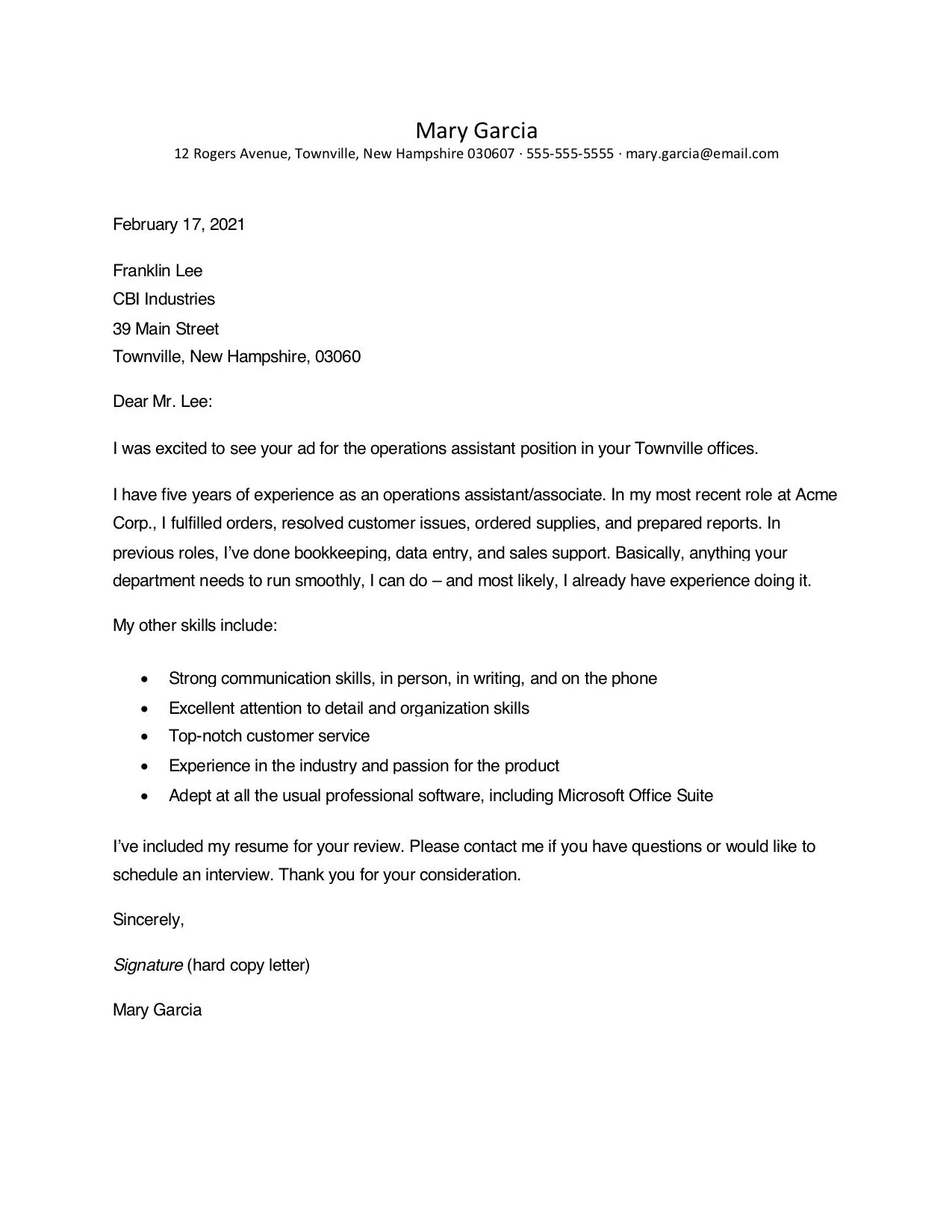
The initial impression you make with your cover letter can be critical. A properly addressed letter signals that you’ve paid attention to detail and are serious about the position. It sets a tone of professionalism and respect that can immediately distinguish you from other applicants who may have overlooked this important step. Your cover letter is often the first interaction you have with a potential employer. Make it count.
Demonstrating Attention to Detail
In today’s competitive job market, attention to detail is highly valued. Correctly addressing your cover letter is a simple yet effective way to showcase this skill. It shows that you’re meticulous, thoughtful, and take pride in your work. These are qualities that employers look for in their employees. Simple mistakes can be costly, so double-checking all details of your cover letter and application materials is vital.
Basic Cover Letter Addressing Principles
The foundation of a well-addressed cover letter is knowing who to address it to. Ideally, you want to find the hiring manager’s name, as it adds a personal touch and shows that you’ve done your research. If the name isn’t readily available, there are other options to consider, ensuring you maintain a professional tone throughout your letter.
Finding the Hiring Manager’s Name

Personalizing your cover letter by addressing it to the hiring manager is the ideal scenario. This shows initiative and demonstrates your interest in the specific role. It also makes your application stand out from generic applications. But how do you find the name of the hiring manager? There are several avenues you can explore.
Using Online Research
The internet is your friend! Search on LinkedIn, the company website, or other professional platforms. You may find the name of the hiring manager, recruiter, or someone in the relevant department. Searching for the job posting and the company’s people often yields the most accurate results. Use the name if you can find it; if not, there are other options.
Checking the Company Website
The company’s ‘About Us’ or ‘Careers’ section might list contact people. You can often find the name of the hiring manager, especially if the job posting specifies a contact person. Even if the specific hiring manager isn’t listed, you might find the name of the department head, which is a good alternative.
When the Name is Unavailable
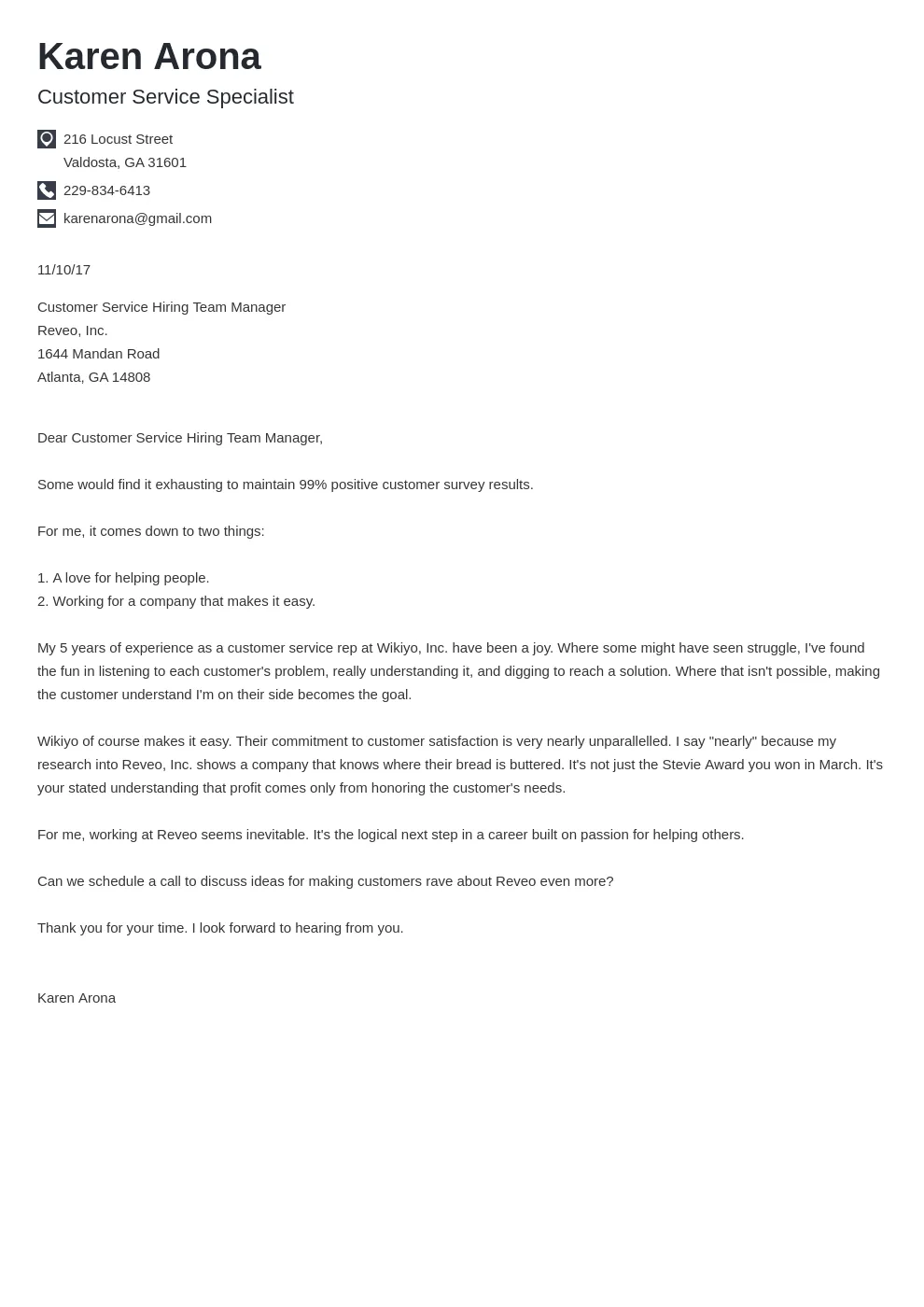
Sometimes, despite your best efforts, you cannot find the hiring manager’s name. In this case, don’t panic. There are still professional ways to address your cover letter.
Using Generic Greetings
If you can’t find the hiring manager’s name, use a professional greeting such as Dear Hiring Manager, Dear [Department Name] Hiring Team, or To Whom It May Concern. These are generally acceptable, but always try to personalize the letter as much as possible. Avoid overly casual greetings.
Addressing the Cover Letter Properly
Once you’ve determined who you’re addressing the cover letter to, it’s time to start the letter itself. The way you address the recipient sets the tone for the rest of the communication. Professionalism and respect are paramount.
Formal Greetings
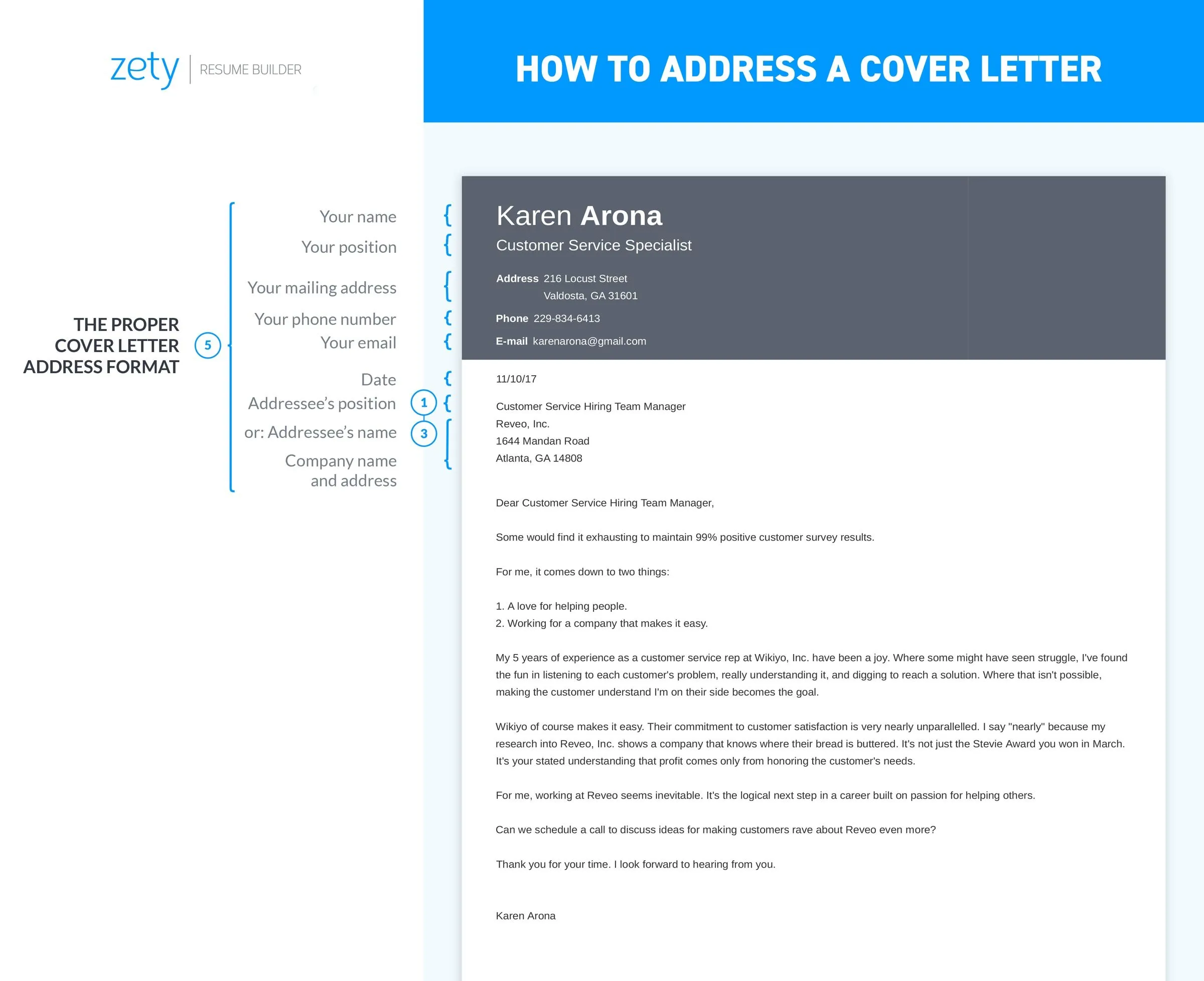
Always start with a formal greeting. Use ‘Dear’ followed by the person’s title and last name, such as ‘Dear Mr. Smith’ or ‘Dear Ms. Jones’. This is a sign of respect and demonstrates your understanding of professional etiquette.
Using ‘Dear Mr. Ms. or Dr.’
When using a formal greeting, be sure to use the appropriate title. Use ‘Mr.’ for men, ‘Ms.’ for women (unless you know they prefer ‘Mrs.’), and ‘Dr.’ if the person has a doctorate. If you’re unsure of a person’s gender, using their full name is a safe option. Double-check the spelling of the name and title, as mistakes here are easily avoided.
Avoiding Casual Greetings
Avoid casual greetings such as ‘Hi’, ‘Hello’, or ‘Hey’. These are appropriate for less formal communication but are not suitable for a cover letter. Maintain a professional tone from beginning to end.
Cover Letter Format Guidelines
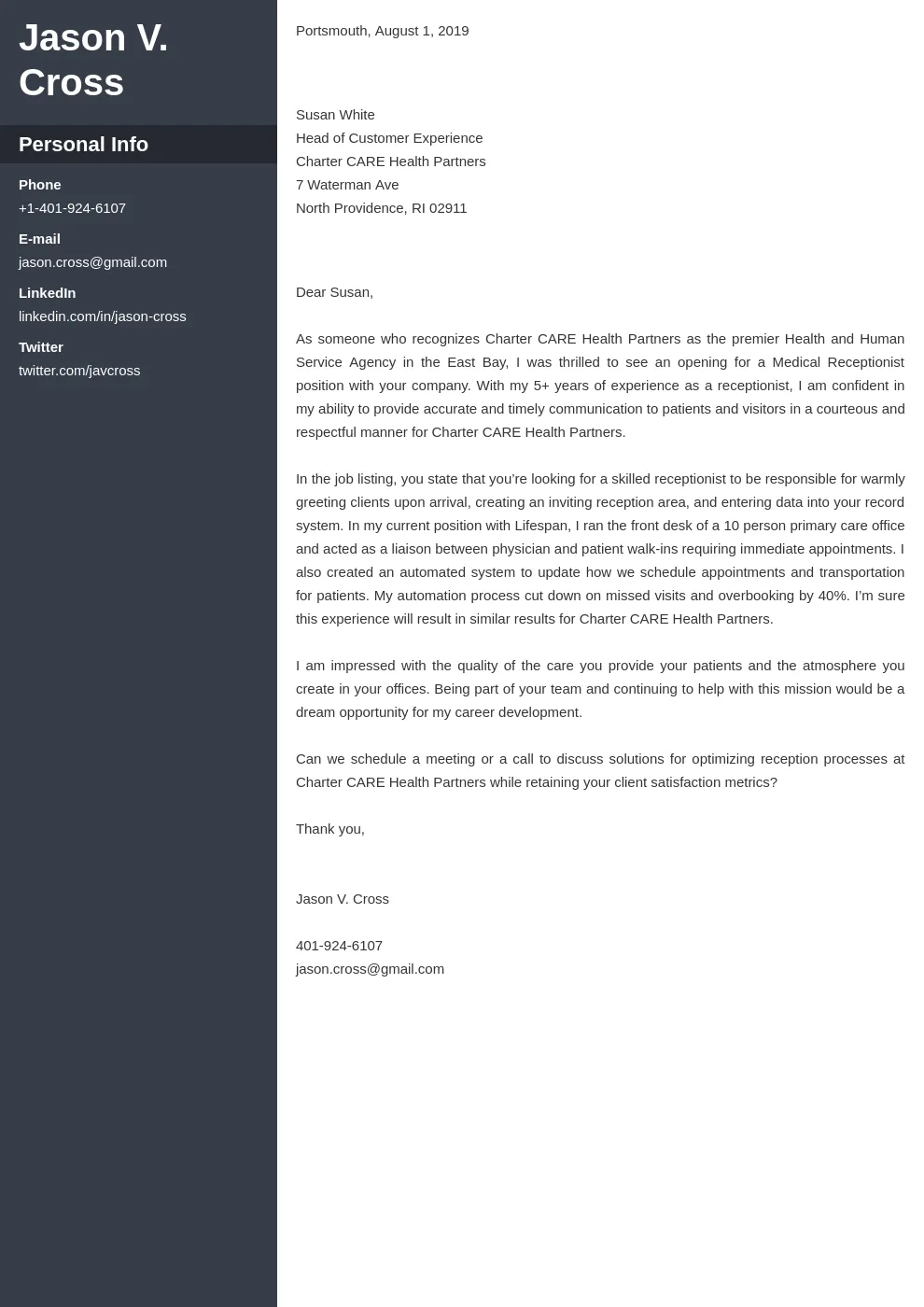
Proper formatting is essential for making your cover letter easy to read and professional. Adhering to standard formatting guidelines, including the address block, is a key element. Make sure that your contact information, the recipient’s details, and the closing are well-formatted and presented neatly.
Formatting the Address Block
At the top of your cover letter, include a standard address block. This includes your contact information and the recipient’s details. Ensure that everything is formatted correctly, is easy to read, and is consistent with the rest of your application.
Contact Information
At the top of your cover letter, include your contact information: your name, address, phone number, and email address. Make sure your email address is professional. Double-check all details for accuracy.
Recipient’s Details
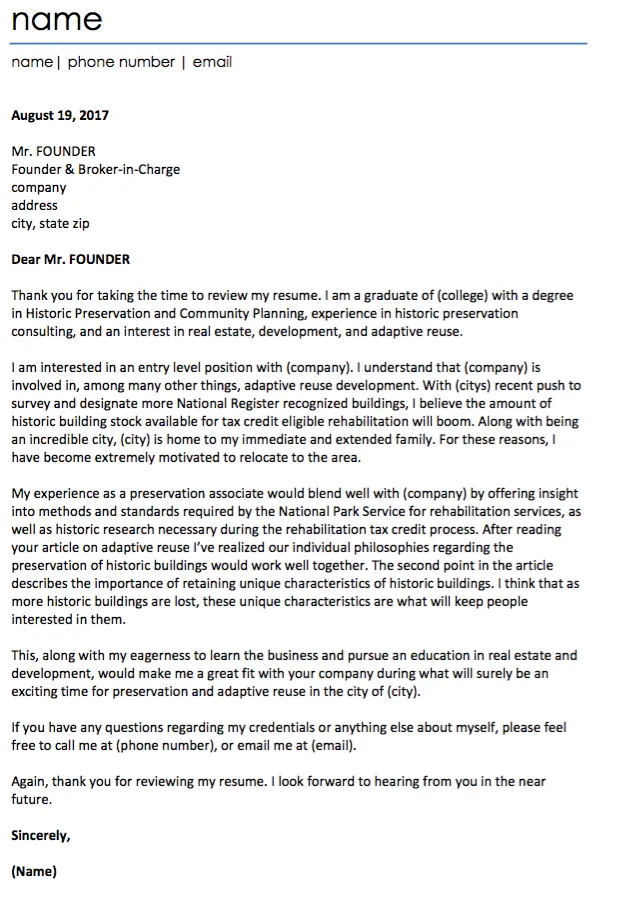
Directly below your contact information, include the recipient’s details. This should include their name (if known), title, company name, and address. Check that all details are accurate to avoid errors. This shows your attention to detail and respect for the recipient.
The Closing and Signature
The closing of your cover letter should be as professional as the opening. The way you conclude your letter can leave a lasting impression, so it’s important to end on a positive note.
Ending Your Cover Letter
The closing should mirror the tone of your entire cover letter. It should express gratitude and reiterate your interest in the position. Keep it concise and professional.
Using Appropriate Closing Statements
Use a professional closing such as ‘Sincerely’, ‘Best regards’, or ‘Yours sincerely’ before your signature. Avoid overly casual closings. Choose a closing that aligns with the overall tone of your letter and express your appreciation for the reader’s time and consideration.
Including Your Signature
If you’re submitting a digital cover letter, type your full name below the closing and, if possible, include a digital signature above your typed name. If printing the cover letter, sign your name in blue or black ink above your typed name. This adds a personal touch and reinforces your professionalism.
Addressing a cover letter correctly is a small but significant detail that can greatly impact your job application. By following these guidelines, you can ensure your cover letter makes a positive impression and demonstrates your attention to detail and professionalism. Always research, double-check, and maintain a respectful tone. Good luck with your job search!
